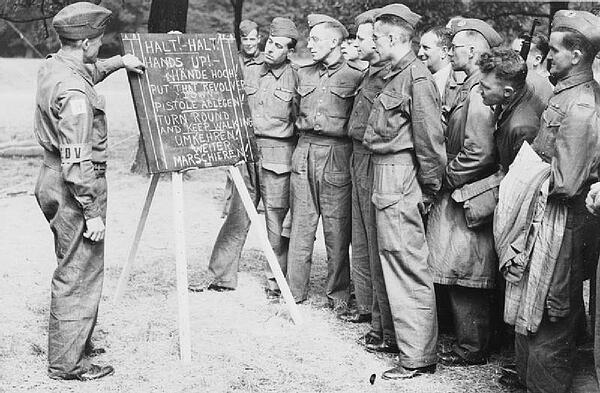Home Guard
The Home Guard was formed to defend the British coastline in the event of German invasion. On the evening of 14 May 1940, the Government sent out a radio message appealing to all men aged between 17 to 65 to volunteer for the Home Guard, or the Local Defence Volunteers as they were then known.
Although the Home Guard were never required to defend the country in a German invasion, it was very important. Many men who could not join the army because they were too young, old or medically unfit, were grateful for the opportunity to serve their country.
Anthony Eden’s radio broadcast on 14 May was met with enthusiasm and within 24 hours 250,000 had joined. By August 1940, more than 1.5 million men had joined.

The government were overwhelmed by applicants for the Home Guard, with ten times more men registering than expected.
This enthusiastic response created various problems for the War Office. For one, there was not enough uniforms and weapons to administer to every volunteer. Therefore, members were ordered to find whatever they could to defend themselves. Six weeks after Eden’s announcement there was still a major shortage of rifles.
The regular army had been equipped with all the available weapons and many were lost at the British Expeditionary Force at Dunkirk. The Home Guard was ordered to find whatever it could to defend itself, leading to the nickname of the 'Broomstick Army'. There was still only one rifle to every six men in the Home Guard, a whole six weeks after Eden called for volunteers. When rifles eventually arrived, they were American P17s and P14s from World War One.
The Home Guard were trained in weapons handling, basic sabotage and unarmed combat. However, their training was often criticised for being more focused on drill than practical skills. They still only had access to outdated weaponry such as pikes and were often referred to as the ‘Broomstick Army’.
However, Tom Wintringham - a Spanish Civil War veteran - changed the way the Home Guard was trained in July 1940. He set up a school at Osterley Park where he taught the men how to use guerilla warfare to defend Britain. Hundreds of Home Guard volunteers turned up to learn the basics of guerilla warfare.
At Osterley Park, the volunteers gained training in armed combat. In the first three months Wintringham and his men had trained 5,000 volunteers.
However, the government never fully supported Wintringham, who they looked upon with suspicion. He had fought for the Communists in the Spanish Civil War and in 1940, Stalin's Russia was on the side of the enemy.
The military took over Osterley Park after a mere three months. They then set up three more training centres. The main role of the Home Guard was to detect any threats to national security by checking people’s identity cards - anybody not carrying one was arrested.
The advantage of the Home Guard was that they knew local people, making it easy to recognise any strangers who could potentially be spies.
The duties of the Home Guard are outlined in the "Home Guard Handbook" published in 1940. Their responsibilities included guarding important points, defending roads and villages to obstruct enemy movement and attacking lightly armed enemies.
Some of them also manned anti-aircraft guns in London, in particular at bases at Pett’s Wood and Shooter’s Hill. This work allowed fit men to join the regular army. 10,000 Home Guard men worked on the anti-aircraft batteries by the beginning of 1944.
Thanks to shows such a ‘Dad’s Army’, the Home Guard has gained a reputation for being fairly useless. However, the volunteers were vital to the war effort.. By acting as sentries, patrolling the countryside and manning the anti-aircraft batteries, they relieved the regular army of these duties.
See also: Roland Penrose
MLA Citation/Reference
"Home Guard". HistoryLearning.com. 2025. Web.
